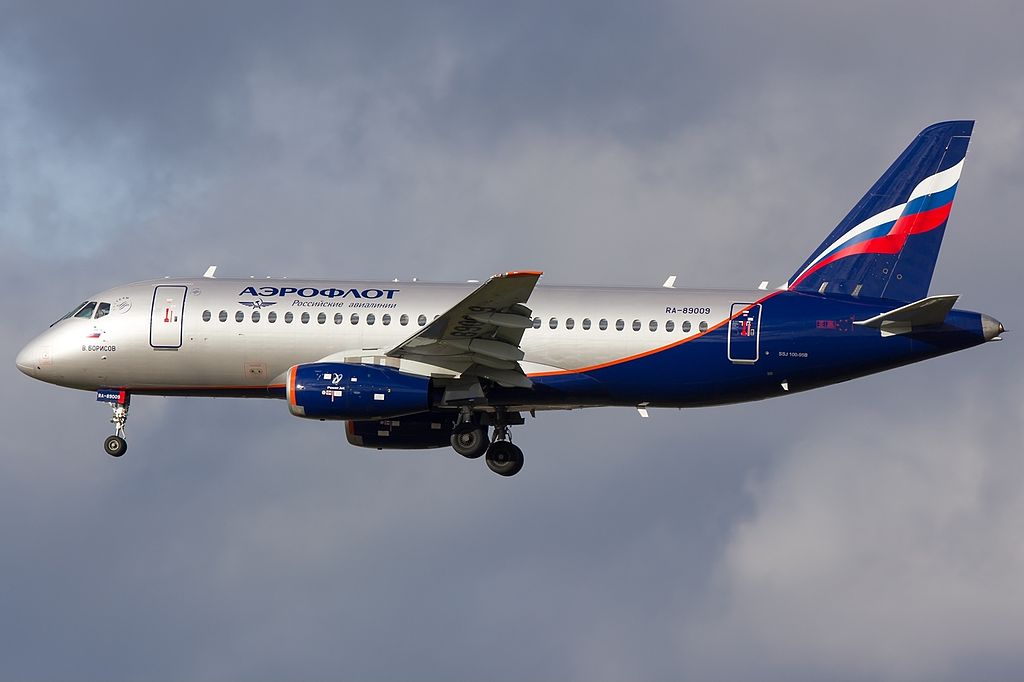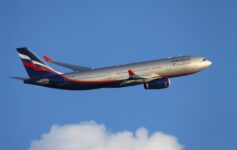I have three “problem airlines” at Award Expert, airlines that clients are very hesitant to fly.
The first is Turkish Airlines. I have made the case for why Turkish is safe and a slam-dunk choice, but the resistance continues. The second is EgyptAir. I went out of my way to fly EgyptAir recently, ready to either stop even proposing it to clients or start making a stronger case for it. It turned out that I had an excellent experience.
The third airlines is Aeroflot Russian Airlines. I get that the reputation of the airline in its Soviet days was rightfully poor. Nevertheless, the Aeroflot of today is nothing like the Aeroflot of the past. I flew Aeroflot a decade ago from Moscow to Hong Kong in business class and had a great experience. Lucky and Tiffany recently flew Aeroflot and also had a good experience. With lie-flat seats in business class, modern aircraft, tremendous food, and great service, there is no rational reason to avoid Aeroflot.
But that “modern aircraft” concern continues to be a roadblock for many. Just last week, we received an Award Expert trip request from a client for a trip to Russia. The instructions were crystal clear: No Russian airlines because “I don’t trust their airplanes”. After I explained that Aeroflot has modern Boeing and Airbus aircraft, the client was happy to book on Aeroflot and fly non-stop. But the client’s confusion is something I hear a lot. So let’s discuss it.
Does Aeroflot Still Use Russian Planes?
Yes, it does. BUT not for any long-haul flights and not for the shuttle between St. Petersburg and Moscow. Unless you are going deeper into Russia, you’ll find yourself on modern American or European planes. If you do go deeper into Russia, you’ll find yourself on brand-new, modern Russian jets.
Aeroflot Fleet
Aeroflot boasts that is has “one of the youngest in the world”. As of March 1, 2017 Aeroflot includes 190 passenger aircraft, with an average age of 4.3 years.
The Aeroflot fleets consists of:
- 15 Boeing 777
- 21 Boeing 737
- 22 Airbus A330
- 33 Airbus A321
- 69 Airbus A320
- 30 Sukhoi SuperJet-100
Sukhoi SuperJet-100?
Yes, that is a brand new Russian aircraft. With the retirement of the Ilyushin-96 last year and the Tuplolev-154 many years earlier, the Soviet-era fleet is retired. The SSJ-100 carriers 12 passengers in business class and 75 in economy class. With a range of 4000KM, it can cover a fair distance but the Russians are pragmatic—they understand that people do not like flying “Russian” planes and so keep this model off most European routes. Then again, you’ll find this airplane on CityJet, Brussels, and bmi regional as well.

CONCLUSION
Aeroflot has a stellar safety record, a great onboard product, and one of the youngest fleets in the world. With both great pricing and award availability, there is no rational reason to avoid flying Aeroflot.




Your clients don’t have a problem flying MH?
Fair point. I didn’t even think of that. MH is a no-go. I don’t even bother to try.
Surprised and then not surprised about Turkish. Trump is Blowhard In Chief after all. Fear and ignorance…
There are plenty of rational reasons to avoid Aeroflot. The most obvious is that some people don’t want to give their money to countries hostile to the US. It’s the same rational reason to avoid flying ME airlines, that and the added benefit of not flying over numerous active warzones and terrorist hotbeds.
So you think Trump is just blowing hot air when he says Russia is not our enemy?
Probably doing his best to be diplomatic. He’s an amateur politician for sure, but he know negotiation, and he realizes not much to gain by saying so.
Hello, Matthew!
Thanks for your sharing. Indeed, SU is a very safety airline (however as a person living in Russia I could be nonobjective), but unfortunately SSJ isn’t a constantly flying aircraft type now (one of articles about –http://www.kommersant.ru/doc/3181159).
Also, SU uses SSJ on some international routes (from SVO to TXL, DRS, CPH).
Thanks for the article link!
Thanks Matthew for this great and unbiased article. I learned manything about a Russian airline.
Like WR, I’d point out that many people keep certain airlines on their personal no-fly list for political reasons, not because of the concern over outdated equipment. Aeroflot could have the youngest fleet of Boeings and Airbii in the sky, and some folks still aren’t going to be willing to fly a Russian airline.
BTW, you don’t have to plan a trip to Europe to check out the Sukhoi Superjet. Interjet flies a handful around Mexico. They used to fly them to DFW, but sadly, they upgauged to an A320 before I had the chance to try it.
One of the main criteria for an airline success is the availability of spare parts and the availability of technician to diagnose and repair an aircraft. This criteria is filled entirely with european and american airplanes. However russian Aerospace company still has work to do to develop a strong and reliable maintenance program for the airplance they build. Aeroflot is reluctant to acquire and operate russian airplance such as the sukhoi superjet for this peculiar reason and the russian government had to twist their arms to get them use this airplane. Every time Aeroflow receives a brand new Superjet now numbering 45, airline commetators indicates that once again Aeroflot is providing support to lacal Aerospace industry, really showing that Superjet is not the first choice but is an imposed choice. The end operational results is that the number of hours per day per airplane that superjet is flying is about 4,5 while the A320, B737 and other european or ameriacan airplances is about 9 hours per day per airplance. So it takes more money to maintain to maintain this airplane in operation while it brings less money to Aeroflot. Very similar results with mexican interjet using 22 superjet. Another aspect about the superjet is that many of its components, may be 40 % are produced by american and european industry. So because of political aspects between theses countries and Russia, these companys OEM do not provide full operational support to superjet in terms of availability of spare parts, causing repair delays and a strong decrease in operational effectiveness of this airplane.